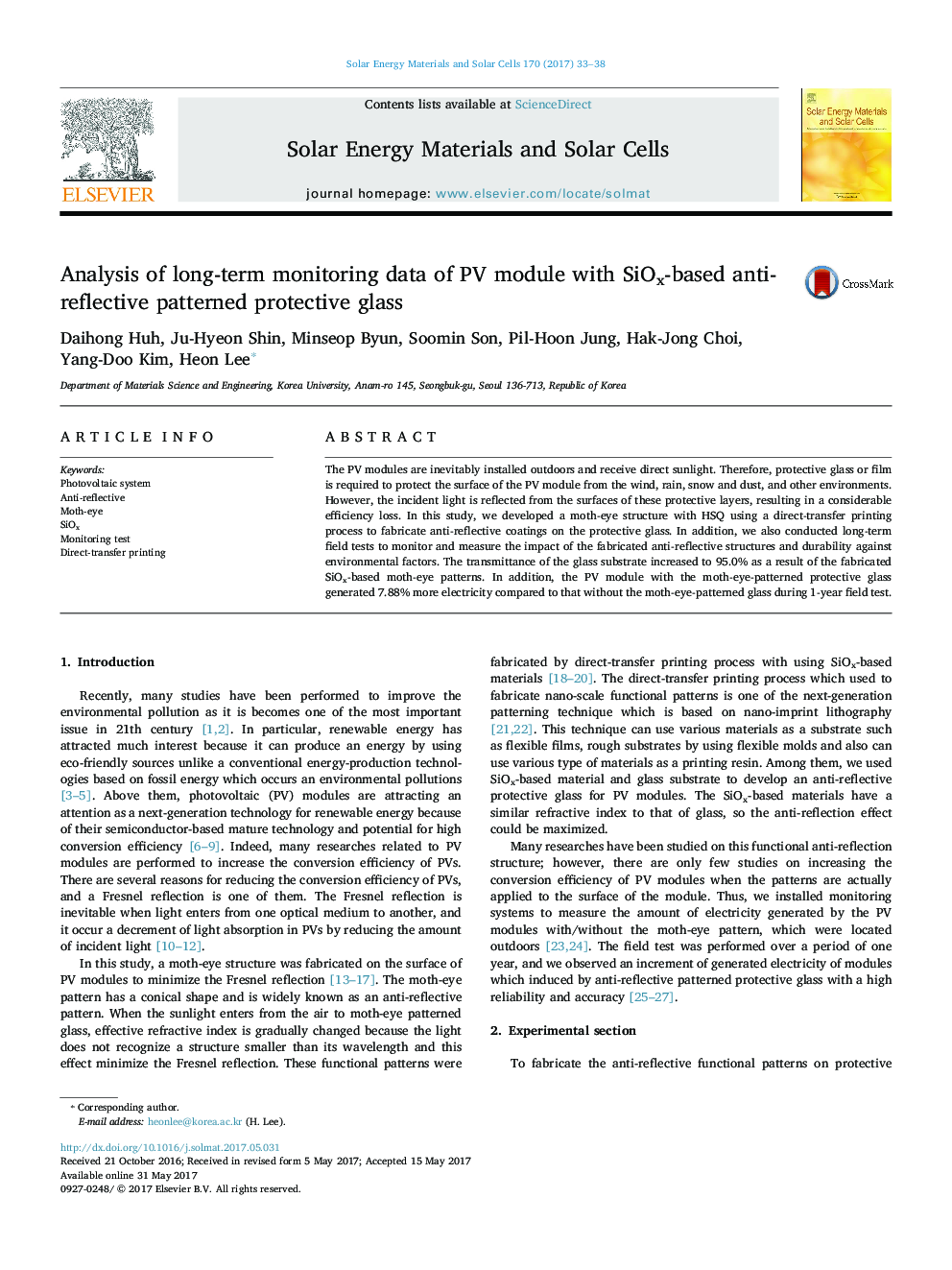| Article ID | Journal | Published Year | Pages | File Type |
|---|---|---|---|---|
| 6456804 | Solar Energy Materials and Solar Cells | 2017 | 6 Pages |
â¢Moth-eye patterns can be easily formed by direct transfer printing.â¢It can increase the transmittance of glass from 3% to 6%.â¢During the field test, 7.88% more electricity was generated by effect of pattern.
The PV modules are inevitably installed outdoors and receive direct sunlight. Therefore, protective glass or film is required to protect the surface of the PV module from the wind, rain, snow and dust, and other environments. However, the incident light is reflected from the surfaces of these protective layers, resulting in a considerable efficiency loss. In this study, we developed a moth-eye structure with HSQ using a direct-transfer printing process to fabricate anti-reflective coatings on the protective glass. In addition, we also conducted long-term field tests to monitor and measure the impact of the fabricated anti-reflective structures and durability against environmental factors. The transmittance of the glass substrate increased to 95.0% as a result of the fabricated SiOx-based moth-eye patterns. In addition, the PV module with the moth-eye-patterned protective glass generated 7.88% more electricity compared to that without the moth-eye-patterned glass during 1-year field test.
Graphical abstractIn this study, using a direct-transfer printing process, we fabricated a moth-eye structure using hydrogen silsesquioxane (HSQ), which contains SiOx-based materials, to develop an anti-reflective coating. Then, we performed a field test using anti-reflective protective glass for PV modules, and 7.88% more electricity was generated by the PV module with the moth-eye-patterned protective glass compared to that without the moth-eye-patterned glass.Download high-res image (228KB)Download full-size image
